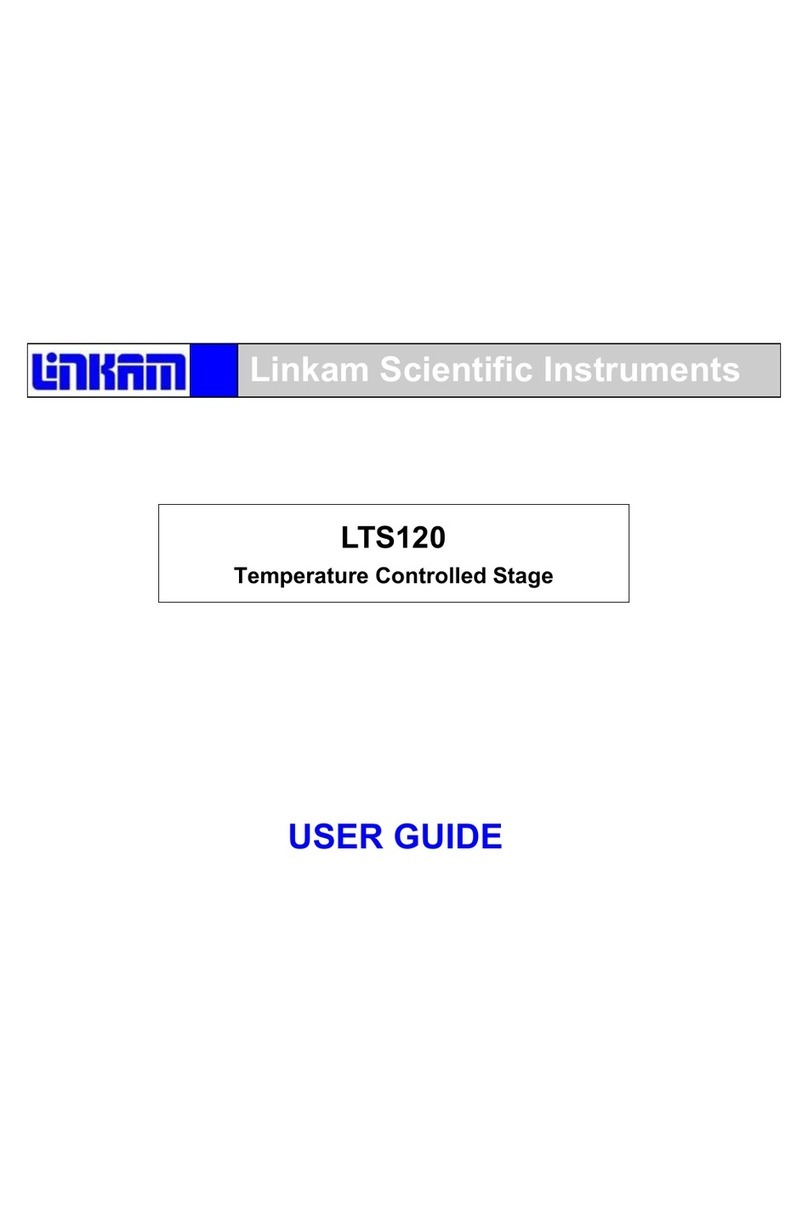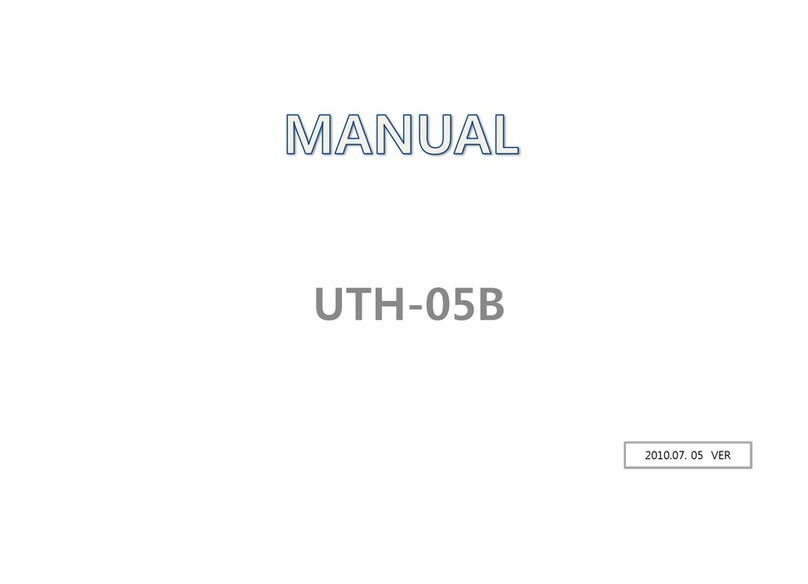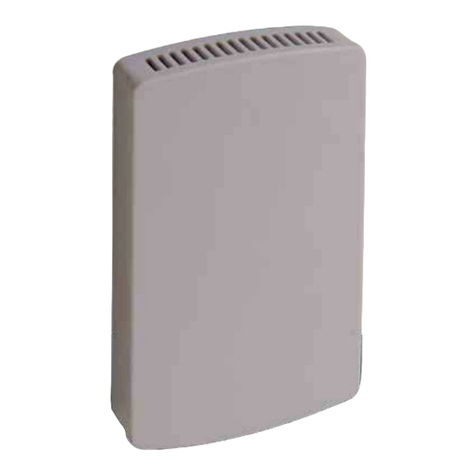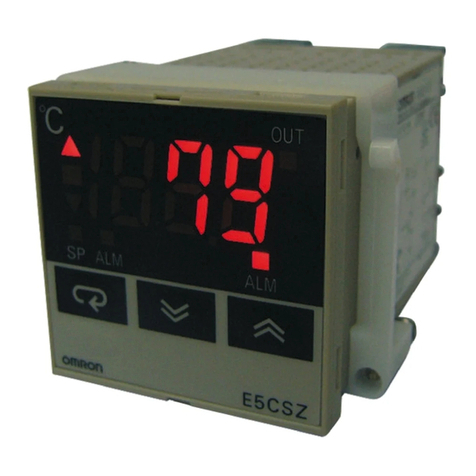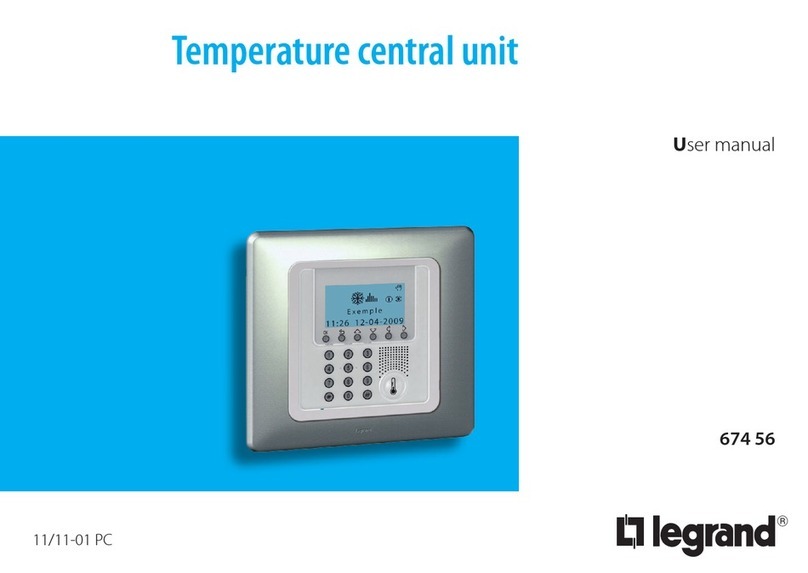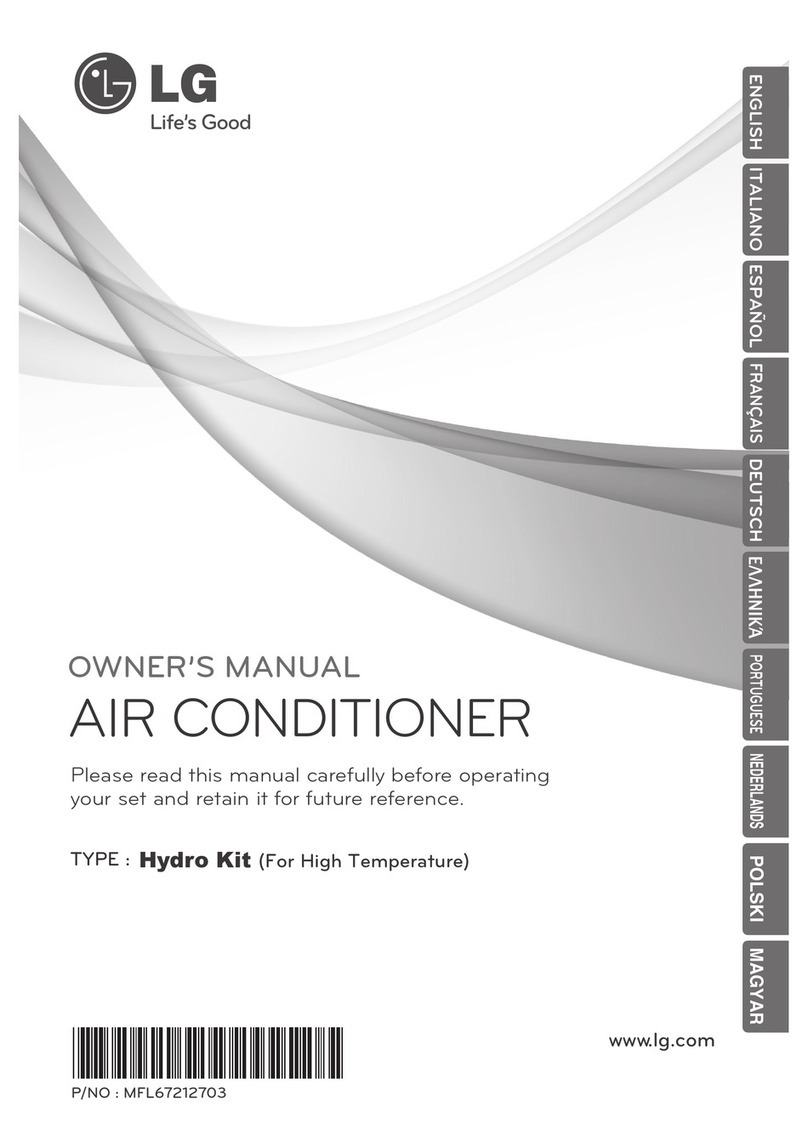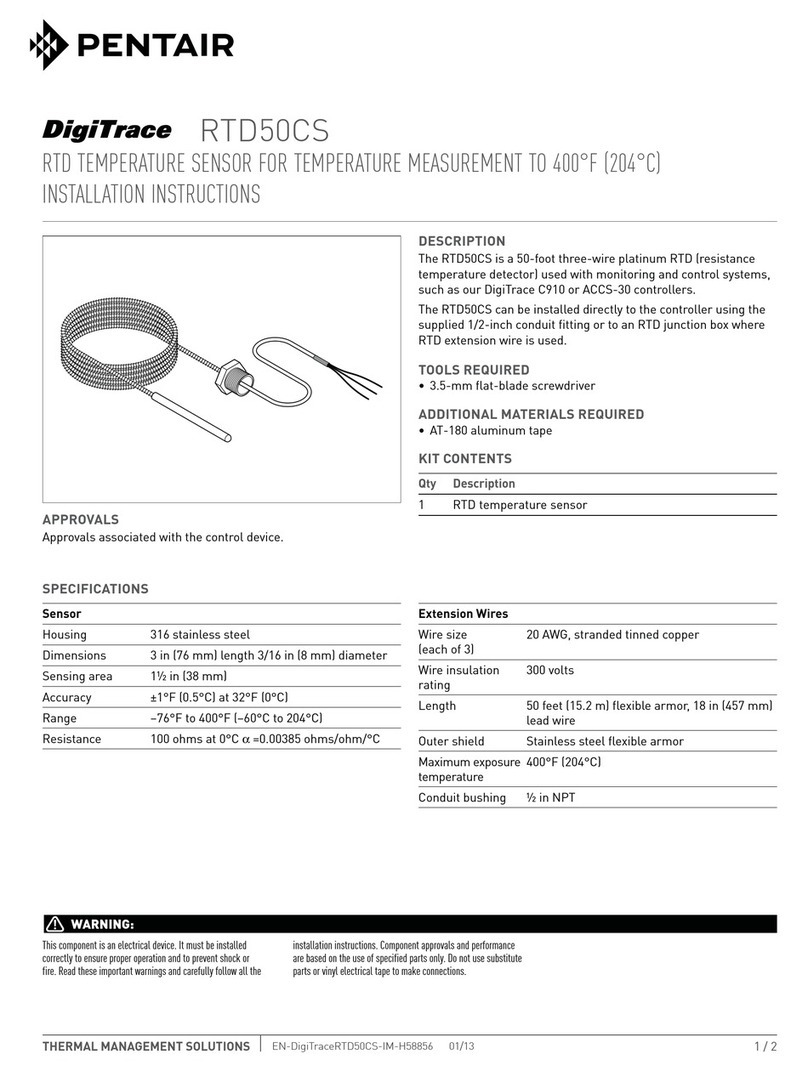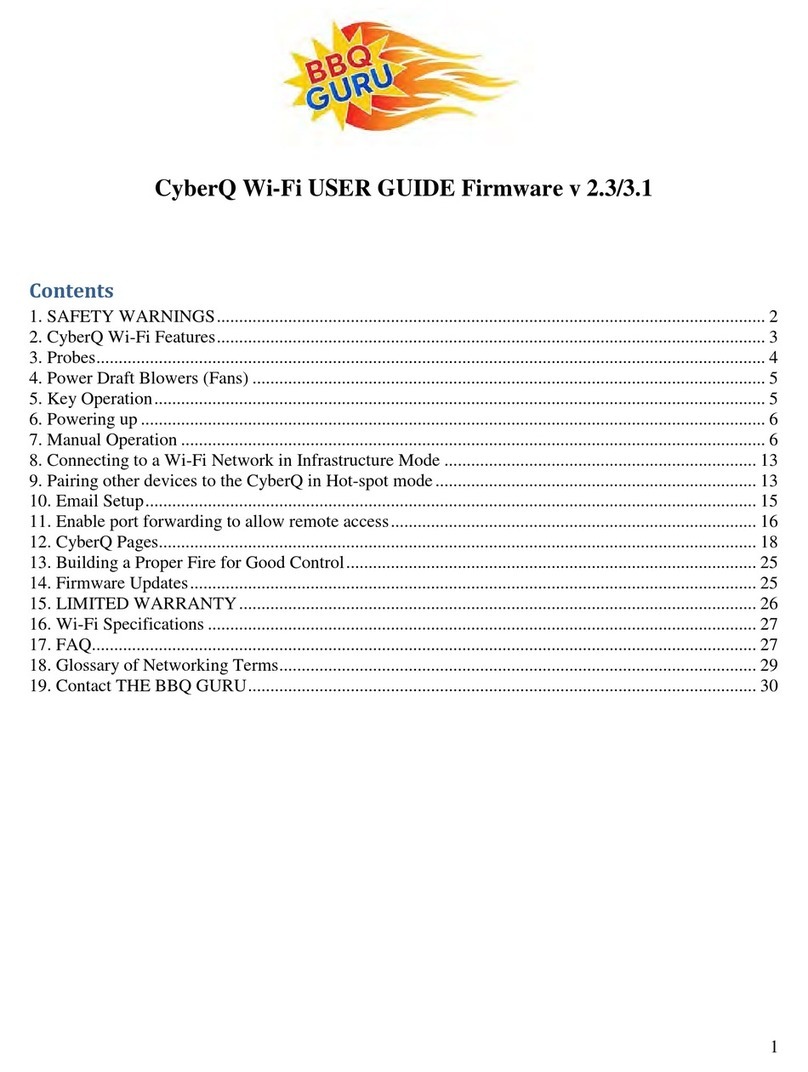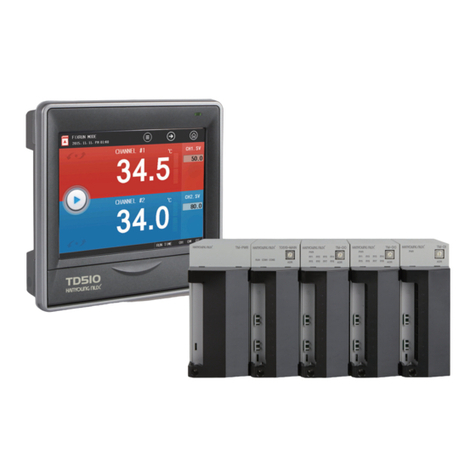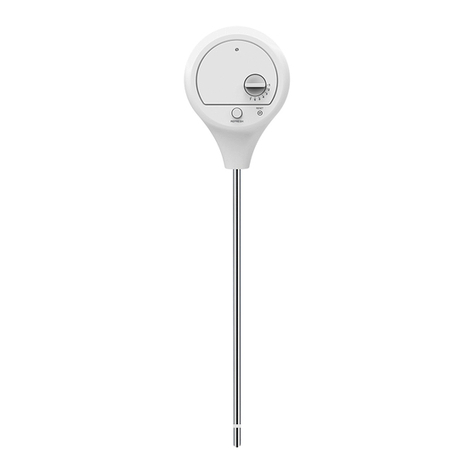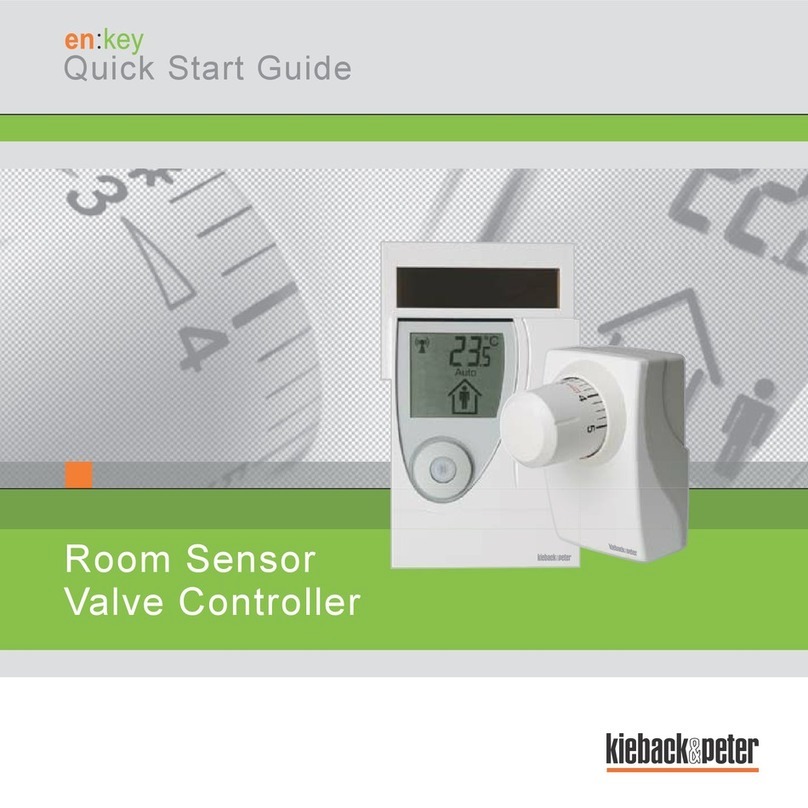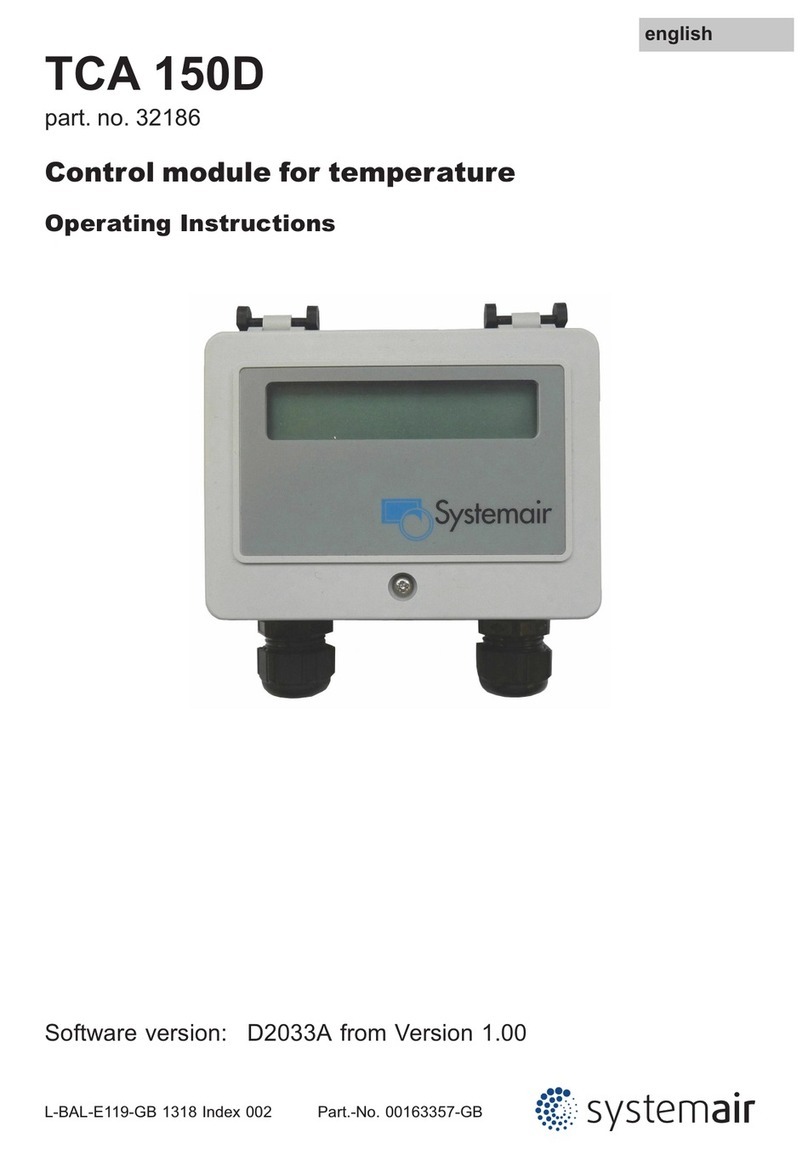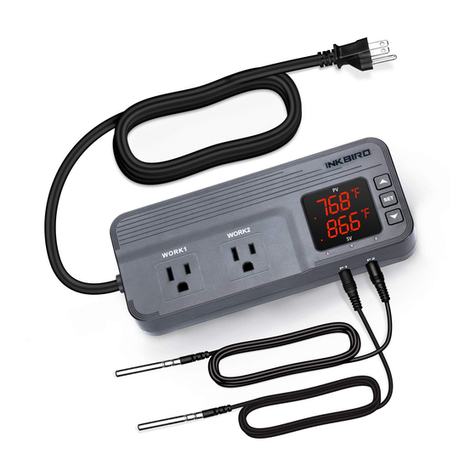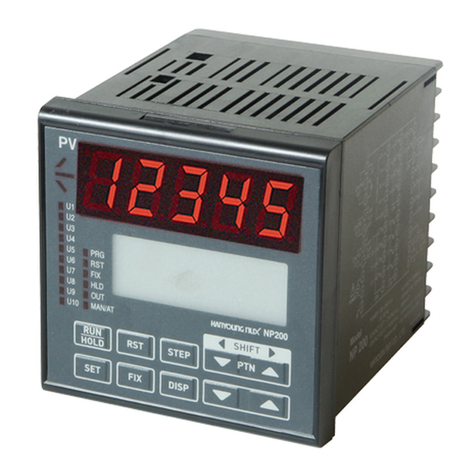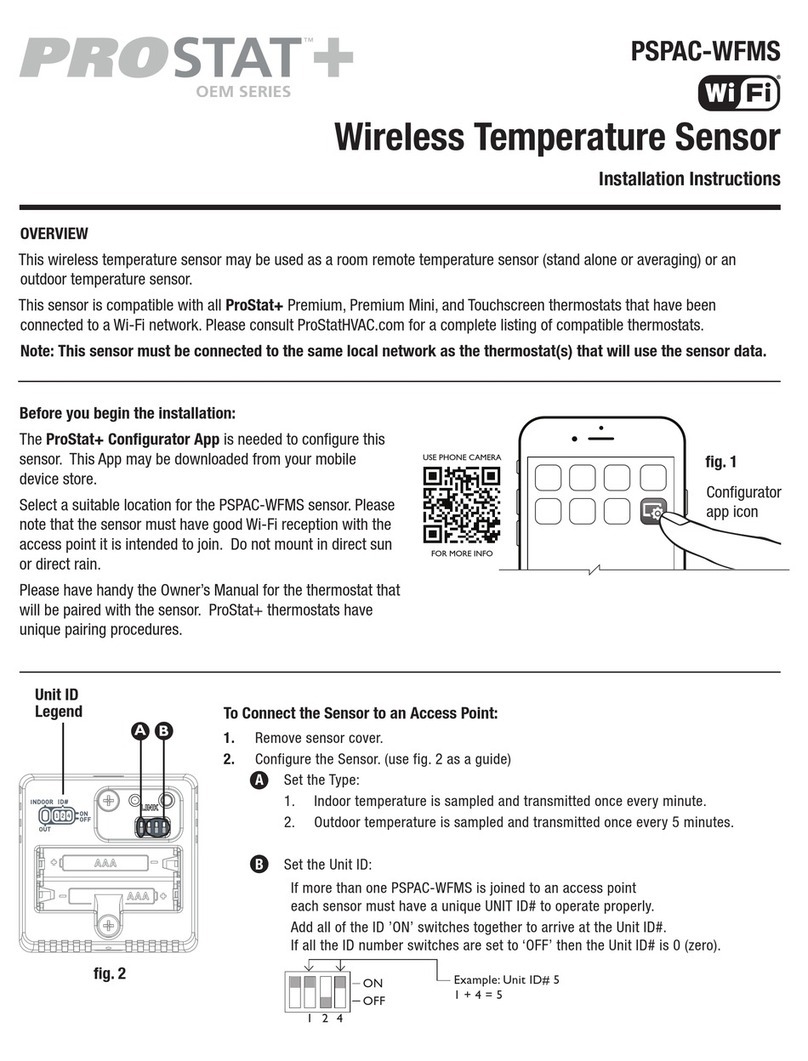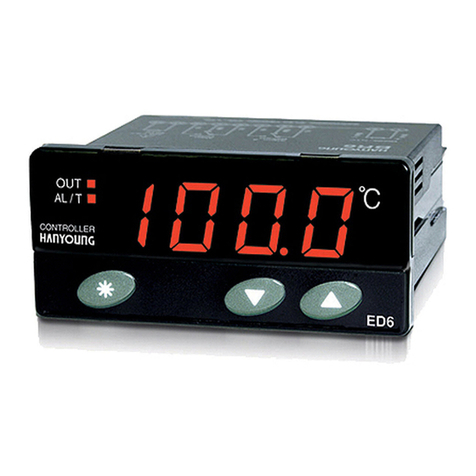Linkam Scientific Instruments FTIR600 User manual

FTIR600
Temperature Controlled IR Stage
Linkam Scientific Instruments
USER GUIDE

2
Contents
Before Setting Up Your Equipment……………………………………………………………………………………...3
Important Notice...................................................................................................................4
Warranty..............................................................................................................................4
Technical Support.................................................................................................................4
Equipment Maintenance........................................................................................................4
Handling Liquid Nitrogen.......................................................................................................4
Feedback..............................................................................................................................4
Safety Precautions................................................................................................................5
Symbol Reference.....................................................................................................5
Introduction..........................................................................................................................6
FTIR600 Stage Specification.......................................................................................6
FTIR600 System...................................................................................................................6
Stage Anatomy.....................................................................................................................7
FTIR600 Stage Assembly……..…………..…………………………………………………………………....7
Stage Assembly.........................................................................................................7
Lid Assembly.............................................................................................................7
FTIR600 Vertical Stage Anatomy………………………………………………………………………………8
Window Assembly.................................................................................................................9
Lid Window Assembly................................................................................................9
Bottom Window Assembly..........................................................................................9
Mounting Stage to an Optical FTIR Microscope…………...........................................................10
Vacuum Tweezers...............................................................................................................11
Connecting the Instruments.................................................................................................12
T95 System Controller Cable Connections.............................................................................12
LNP95 Cooling Pump Connection..........................................................................................12
Remove Transit Screws............................................................................................12
Back Panel Cable Connection....................................................................................12
ECP Water Circulator Pump......................................................................................13
Sample preparation.............................................................................................................14
FTIR/CC Sample Carrier and Stainless Steel Ring..............................................................14
Cooling Connections............................................................................................................16
Purging Procedure...............................................................................................................17
Use LinkPad to set the LNP95 to Manual Mode..................................................................17
Filling the Liquid Nitrogen Dewar.....................................................................................17
Purging the Stage Method 1............................................................................................18
Purging the Stage Method 2............................................................................................19
FTIR600 Vertical Stage……………………………………………………………………………………………………..20
FTIR600 Vertical Stage Setup………………………………………………..…………….…………….……………..21
Gas Purge Valve with Tubing Connection……………………………………………….……………………...21
Base Stand Assembly……………………………………………………………….………………………………….22
Sample Preparation Using the Vertical Stage Holder…………………………………………………………...22
Vertical Sample Holder………………………………………………………..…..…………………………………..22
Sample Preparation……………………………………………………………………………………………………..23
Appendix............................................................................................................................24
Spares and Accessories........................................................................................................25
Troubleshooting..................................................................................................................28
Contact Details....................................................................................................................34

3
Before Setting Up Your Equipment
Please register your products by going to www.linkam.co.uk and click on the
product/software registration button.
You will need to register your equipment with us to:
Activate your warranty and technical support
Access the online setup videos
Permanently unlock the Linksys32 software (if purchased)
If you have purchased Linksys32 software, please install the software first. This pro-
cess will guide to register all of your products.
See Linksys32 manual for further installation instructions.
A CD with a setup videos is supplied with your system.

4
Important Notice
Please check that your Linkam equipment has not been damaged during transit. If there is any evidence of
external damage DO NOT SWITCH ON ANY ELECTRICAL ITEMS.
Contact LINKAM SCIENTIFIC or their appointed distributor immediately. Your warranty may be im-
paired if Linkam is not informed of any transport damage within 7 working days of delivery.
NO attempt should be made to repair or modify the equipment in any way, as there are no user replaceable
parts.
No attempt should be made to open the case except by qualified personnel as hazardous voltages are pre-
sent.
In order to use this equipment successfully, please take time to read this manual all the way through before
using it.
Warranty
This equipment has a warranty against defects in material and workmanship for a period of 12 months.
Linkam will either repair or replace products that prove to be defective. For warranty service or repair,
this product must be returned to Linkam or a designated service facility.
The warranty shall not apply to defects resulting from interfacing, unauthorized modification or misuse,
operation outside of the environmental specifications for the product, or improper site preparation or
maintenance.
Technical Support
Any technical questions or queries should be addressed to the Technical Support Department at the ad-
dress shown on the back of this manual.
Equipment Maintenance
Use a small quantity of isopropyl alcohol with a soft cloth and gently wipe the surface. To clean the hot-
stage, use isopropyl alcohol (IPA) and cotton swabs. Take great care not to touch the platinum tempera-
ture sensor protruding from the side of the heating element. The sensor is very fragile.
Handling Liquid Nitrogen
To cool samples below room temperature a LNP95 liquid nitrogen pump is required. Please refer to your
health and safety manual for instructions on how to handle liquid nitrogen safely. The Dewar supplied
with the LNP95 has a safety release valve built into the siphon assembly. Always use in a well ventilated
room.
Feedback
Your feedback will be greatly appreciated, please go to www.linkam.co.uk to fill in the Feedback form.

5
Safety Precautions
1) Read this guide before using the equipment. Save these instructions for later use.
2) Follow all warnings and instructions which may be placed on the programmer or stage.
3) If for any reason the mains fuse needs to be replaced then it must be replaced by one of the same
type and rating as shown in the equipment ratings.
4) To prevent electric shock, do not remove the cover of the controller or associated electronics.
5) Never use the equipment if a power cable has been damaged. Do not allow any heavy objects to
rest on the power cables. Never lay the power cables on the floor.
6) Do not obstruct any ventilation holes. Do not attempt to insert anything into these openings.
Provide adequate ventilation of at least 75mm all around the equipment.
7) Do not expose the equipment to water. If for any reason it gets wet then unplug it from the mains
and contact Linkam Scientific Technical Support.
8) The equipment is not intended to be used outdoors.
9) Each product is equipped with a 3-wire grounded (earth) mains plug or a free-end 3 wire
mains lead. The plug only fits into a grounded-type outlet. The free-end mains lead should be
connected to a correctly grounded 3-wire mains outlet. Do not defeat the purpose of the grounded
(earth) type plug.
Free - end mains leads are colour coded as follows :
Colour Function
Brown Live
Blue Neutral
Green/Yellow Earth (Ground)
10) If any problems occur then unplug the equipment from the mains outlet and contact Linkam Sci-
entific Technical Support.
11) Do not remove the cover from the equipment unless the mains inlet has been removed. Any
servicing should be carried out by qualified service personnel.
Symbol References
Caution:
This safety symbol is on the back panel of the equipment and warns:-
The user must not make or remove any connections while the unit is powered on.
To avoid electric shock do not remove the cover. Refer servicing to qualified service personnel.
Caution:
This warning symbol indicates that the surface labelled with this symbol may be hot.

6
Introduction
Thank you for purchasing the FTIR600 Stage
system. Please take the time to read through the
manual as it will help you to make the most out of
the equipment.
FTIR600 Stage Specifications
Maximum temperature: 600°C
Minimum temperature: -196 °C with LNP95
Maximum heating rate: 150°C/min
Objective light
approach angle: 116°
Objective Lens WD: 4.5mm
Condenser lens WD: 12.5mm
XY-Manipulators travel: 16mm
Aperture hole: 3mm or 1.3mm
Weight: 0.6Kg
FTIR600 System
The system consists of a FTIR600 stage, a T95-
LinkPad System Controller and optional LNP95
liquid nitrogen cooling pump.
Linksys32 System control software and digital
video capture can be added as an option to control
from a PC.
There are 2 FTIR600 Stages available:
1. The FTIR600 stage is used horizontally and
mounted onto an upright microscope by using
either specific stage clamps, an adaptor plate or
by simply placing on the XY table of the micro-
scope, using double sided adhesive tape.
2. The FTIR600 Vertical Stage is supplied with a
Base Stand and is designed to work vertically
inside a FTIR Spectrometer.
Note: the manual will describe the setting up and
operation of the Standard FTIR600 Stage. The
FTIR600 Vertical Stage will work in a similar
way, see page 19 for additional features and use
of this stage.
FTIR600 Stage System with LNP95
FTIR600 Vertical Stage
FTIR600 Stage

7
Stage Anatomy
FTIR600 Stage Assembly
1. Lemo connector for stage lead
2. Heating element carrier assembly
3. Stage body
4. Stage body water connector
5. Gas purge valve
6. Y-Sample manipulator
7. Stage door
8. Door locking thumbscrew
9. X-Sample manipulator
10. Liquid nitrogen cooling connector
11. Bypass stage body water cooling connector
12. Sample chamber
13. Earth safety contact for lid
15. Heating element wire
16. Stainless steel cooling tube
17. 22mm diameter pure silver heating block
18. Platinum temperature sensor
19. Sample holder ramp
20. Aperture hole 1.3 or 3mm depending on stage
type)
Lid Assembly
The Stage Lid is removed from the stage by un-
screwing anti-clockwise.
21. Stage Lid
22. Lid Insert
23. Window (standard: 0.5x22mm ZnSe)
24. Holes for Tube Clip Holder or window
removal tool
1
2
3
5
6
7
11
8
9
13
4
10
15
16
18
19
12
20
21
22
24
23
17

8
FTIR600 Vertical Stage Assembly
The FTIR600 Vertical Stage has the same specifi-
cations and works in exactly the same way as the
standard FTIR600. The heater assembly is locat-
ed on the side, the Gas Purge Valve and Stage
body water cooling connectors are repositioned so
that an additional Base Stand can be included in
the Stage design to make the stage stand in a
vertical position.
1. Heating element carrier assembly
2. Gas purge valve with Tubing
3. Gas Purge Valve
4. Base Stand Assembly
5. Stage body water connector
6. Vertical Sample Holder Assembly (Post and
Holder)
12
3
4556

9
Window Assembly
A standard Quartz window is fitted in the top and
bottom window of the FTIR600 Stage.
If you have ordered alternative IR transparent
windows (potassium bromide, calcium fluoride,
barium flouride), please follow the instruction
below to exchange the windows.
Lid Window Assembly
To replace the windows in the Stage Lid (1) use
the Window Tool (2) and align the two wide
spacing pins to the Tube Clip Holder holes and
unscrew the Lid Insert (3).
The Stage Lid and Lid Insert should be turned
upside down as shown in the diagram opposite
and reassembled in the order indicated. Place the
window with silicon rings in the recess of the lid
insert.
The Lid Insert should be screwed down until the
cover slips are held firmly, then turn the assembly
over and screw down the Lid Insert until it is felt
to come to a stop.
Note: the windows can be replaced with a glass
window W22G (22 x 0.17mm) if the stage is used
as a standard heating / freezing stage.
Bottom Window Assembly
Use two narrow spacing pins of Window Tool (2)
to align it to the two holes of Window Locking
Ring (4) and unscrew.
Reassemble the bottom window as shown in the
opposite diagram
Note: the potassium bromide and barium fluoride
windows are extremely brittle, please take extra
care and do not use excessive force as this can
damage the windows.
2
1
IR
transparent
window
(22mm)
Silicon
rubber
rings
3
Silicon
rubber
rings
IR
transparent
window
(22mm)
2
4

10
Mounting Stage to an Optical
FTIR Microscope
The following description is for mounting the
FTIR600 Stage on to an optical FTIR micro-
scopes which have a circular substage assembly
(1).
Attach the curved stage clamps (part no. 9542) to
the base of the stage using the supplied hex
screws and the outer most holes in the base plate.
Adjust the two positioning screws (2) so that
approximately 5mm of thread is exposed on the
inside edge of the clamp. This will roughly posi-
tion the stage in the centre of the dovetail.
Place the stage onto the circular substage, then
using the two positioning screws (2) ensure that
the aperture is in the centre of the field of view
and lock the stage in place by tightening the
Locking Thumbscrew (3).
For other types of microscope substage, refer to
the diagram included with the stage adaptor.
9542 curved clamps set
1
2
2
3

11
Vacuum Tweezers
The vacuum tweezers are used to manipulate the
glass sample slides onto the silver block to pre-
vent fingerprints on the glass and scratching the
surface of the silver block when using standard
fine tip metal tweezers.
The System is supplied with a Vacuum Tweezers
Kit which consists of a Vacuum Pump (1) and
tweezers (2).
Connect the tubing at the end of the tweezers to
the Regulator Valve (3) connection.
Use the dial on the valve to adjust the vacuum for
the tweezers.
Use a finger to block the hole of the tweezers to
pick up a sample cover slip with the suction cup.
Release the finger to drop the sample cover slip.
1
2
To vacuum pumpTo tweezers
3

12
Connecting The Instruments
T95 System Controller
Cable Connections
For more details on the T95 System Controller
please refer to the T95 System Controller manual.
Connect the Stage Cable to the Lemo Connector
on the stage and connect the other end to the
Stage Connection Socket (1).
If connecting an LNP95 cooling pump you must
switch this on BEFORE you switch on the T95
controller.
LNP95 Cooling Pump Connection
If your system is supplied with a LNP95 Liquid
Nitrogen Cooling Pump System, setup the LNP95
as described below.
Remove Transit Screws
Before using the LNP95 remove the 4 transit
screws, marked by small yellow labels (2), from
the base of the LNP95. Transit screws shown by
arrows in the adjacent image. These screws hold
the pumps in place for shipping.
Keep the screws safe by screwing them into the
holes on the back panel as shown by the arrows.
The screws must be replaced back into the transit
holes on the base, when shipping back to Linkam
for service or repair.
Back Panel Cable Connection
Connect the Instrument Bus Cable (3) between
the LNP95 and T95 as shown.
Note: either of the purple coloured Instrument
Bus Sockets on the LNP95 can be used.
LNP95 MUST BE SWITCHED ON BE-
FORE T95 SYSTEM CONTROLLER
T95
LNP95
3
T95 back panel
1
2

13
ECP Water Circulator Pump
If you have purchased the ECP with your System,
read the following to set up the ECP with the
FTIR600 stage. Refer to the ECP manual for
more details.
When heating the stage above 300°C for a pro-
longed period of time, the metal casing body of
the stage can get quite hot. Connect the tubing as
shown in the pictures below to cool the Stage.
FTIR600 Stage with water cooling tubing connec-
tions
FTIR600 Vertical Stage with water cooling tubing
connections.
Note: If you have an LNP95 Liquid Nitrogen
Cooling system, the tubing from the Dewar must
NOT be connected to the FTIR600 stage when
heating above 300°C. The thin black capillary
tube will melt inside the heater and damage it.
Bypass cooling
ECP Inlet
ECP Outlet
ECP Inlet
ECP Outlet

14
Sample Preparation
FTIR/CC Sample Carrier and Stain-
less Steel Ring
To load the FTIR/CC Crucible Holder (1).
Open the side door of the stage with the thumb-
screw and slide the FTIR/CC Sample Holder (1)
in. Push the holder as far as it will go, close the
door and tighten the thumbscrew to seal the stage.
The FTIR/CC should not make contact with the
surface of the silver block and should be suspend-
ed a few millimetres above it.
Place the Stainless Steel Ring (2) within the hold-
er. Tap the edge of the ring lightly to ensure that
it has dropped through the aperture of the THMS/
CC and sits properly on the surface of the silver
block.
Note: It is critical that the ring is able to move
freely inside the aperture of the sample holder and
sit flat against the surface of the silver block.
2
1
1

15
Use the vacuum tweezers or a pair of tweezers as
shown and place a 16mm Sample Window (1)
into the stainless steel ring. Tap the edges lightly
to ensure that it sits flat against the surface of the
block.
The Stainless Steel Ring is used to push the
16mm cover slip around the surface of the block
when using the XY manipulators.
Move both of the XY manipulators by a few turns
in both directions to make sure the IR Sample
Window sits flat on the silver block.
Using tweezers place the sample (2) on the 16mm
IR Transparent Sample Window. Accurate tem-
peratures can be obtained by keeping the sample
as small, as thin and as flat as possible.
Heat flow into or out of the sample is affected by
the amount of sample area in contact with the
temperature controlled silver block
IMPORTANT NOTES:
Zinc Selenide windows ar e not to be used at
temperatures exceeding 200°C, and are not to be
cleaned with alcoholic solutions. (but may be
cleaned with water)
Potassium Bromide windows are not to be used
at temperatures exceeding 600°C and may not be
cleaned with alcohol based solutions or water.
Calcium Fluoride / Barium Fluoride windows
are not to be used at temperatures exceeding
1300°C, may not be cleaned with alcohol based
solutions or water and must not be used with
strong acids (specifically H2SO4 or mineral acid)
For stronger / more resilient windows please
contact Linkam Scientific.
.
1
2

16
Cooling Connections
These connections need only be made if the
experiments are to be carried out below room
temperature.
The Dewar siphon (1) is the thick white foam
tubing and is attached to the liquid nitrogen Dew-
ar. The thin black capillary tube inside the white
foam tube must be inserted into the liquid nitro-
gen cooling connectors on the stage.
The white tubing slides on to the outside of the
connector. Twist the siphon whilst sliding it on
and push until it comes to a stop. It does not need
to go all the way to the base of the connector.
The thicker silicon tube from the LNP95 cooling
pump ends in a white PTFE connector (2), this is
pushed over the end of the other stainless steel
connector as seen in the image.
The short tube branching from the side of this
white connector is the Gas Purging Tube (3).
There is a valve opening Insert connector (4)
inserted into the end of this tube. During the
purging procedure, insert this connector into the
Gas Purge Valve (5) on the side of the stage to
open it.
The Gas Purge Valve (5) is opened when the Gas
Insert (6) is pushed firmly into the connector, a
“click” is heard when the two parts are connected
properly. To remove the Gas Insert, push the
outer sleeve of Gas Purge Valve toward the stage
and the Gas Insert (6) should drop out.
There is a second Gas Purge Valve on the oppo-
site side of the stage to allow the gas to leave the
stage. A Gas Insert must also be inserted into this
Gas Purge Valve (7) when purging.
The smaller tube from the outlet on the LNP95
should be placed in position on the top of the lid
using the Tube Clip Holder (8). This tube blows
warm recycled nitrogen gas across the lid window
to prevent condensation on the viewing window
surface.
8
1
2
3
4
5
6
7

17
Use LinkPad to set the LNP95 to
Manual Mode
Touch the active area (1) under ‘Lnp speed’ to
change to the LNP Screen Menu. Touch
’Man’ (2) to switch the LNP95 to manual mode.
The word ‘auto’ is changed to ’speed’ to indicate
the LNP95 is functioning in manual mode.
Using the Keypad type in 100 (max pump speed)
and touch the ’Enter’ button (4) to start the
LNP95 at the programmed speed (5).
Filling the Liquid Nitrogen Dewar
Please follow your health and safety manual for
directions on how to handle liquid nitrogen and
ensure that you have the correct safety equipment
including gloves and safety goggles.
Fill the Dewar approximately 2/3 full and replace
the lid with siphon attached.
DO NOT FASTEN THE CATCHES
Wait for the nitrogen to stop bubbling before
fastening the catches.
Take care when placing lid on a table to always
have the black capillary pointing upwards. It is
easily damaged which will impair N2 flow.
1
2
4
5
Purging Procedure
Before starting a cooling experiment, you will need to purge air from the stage chamber with dry nitrogen.
This will remove the water in the air which would otherwise condense and freeze on the sample disrupting
your image quality and giving you an unwanted O-Hstr between 3000-3600cm-1.
Before you can start purging, the LNP95 must be set to manual mode.
You can either use the LinkPad touch screen or Linksys32 software.

18
Purging the Stage Method 1
There are two methods for purging the stage. Method 1 uses recycled nitrogen gas produced by the
LNP95 from the 2L Dewar.
1. Make sure the stage lid is in place and the stage door is closed.
2. Switch on the temperature programmer and set the limit to 40°C. Press the START button and
wait until the temperature limit is reached. Press HOLD to hold the temperature at 40°C.
3. Switch on the LNP95 cooling system and set it to manual mode, (see page 13) and set the speed to
maximum of 100.
4. Check that the Gas Inserts are locked into place
5. Using a finger on the left hand, block the hole in the white plastic pump connector found on the
perpendicular side to the purging tube. Still working with the left hand, pinch the narrow window
tube to block it. This action will divert all of the nitrogen gas to the Purging Tube and through the
Stage Chamber.
6. With the nitrogen gas flowing through the Sample Chamber, use a finger on the right hand to
block the gas outlet for a few seconds to allow pressure build, then release the gas. Repeat this
for a few minutes to purge the stage.
7. The purging procedure allows mixing of nitrogen gas with the residual air inside the Sample
Chamber. By pressurising the chamber with nitrogen gas and releasing it, the air inside the
Chamber is being diluted with the nitrogen gas.
8. Remove the two Gas Inserts and unblock the pump connector and window tube.
9. Change the LNP95 to AUTOMATIC mode so that the T95 automatically controls pump speed
during your cooling experiment
10. Go to www.linkam.co.uk and register your equipment to see videos of how to purge and more.
Pinch window tube
with left hand
Block hole in
Connector with finger
Purging
tube
Block and release outlet
valve with finger

19
Purging the Stage Method 2
This method uses an inert gas from a gas cylinder
to purge the stage at temperatures above ambient
when the LNP95 is not required.
1. Make sure the Stage Lid is in place and the
Stage Door is closed.
2. From a gas cylinder connect the Gas Insert
with a tubing 3mm inner diameter and 6mm
outer diameter to the Gas Purge Valve (1).
3. Connect a Gas Insert to the opposite side Gas
Purge Valve (2).
4. Use the gas regulator to set a gas flow rate of
1.5L/min.
5. With the gas flowing through the Sample
Chamber, block the gas outlet for a few sec-
onds and releasing the gas outlet valve with a
finger. Repeat this for a few minutes to purge
the stage.
Reduce the gas flow rate to 20cc/min to continu-
ously purge the stage or remove the two Gas
Inserts to keep the chamber under closed inert
atmosphere.
Note: Helium gas is not recommended for contin-
uous purging. This gas has a very high thermal
conductivity and will cool the silver heating block
too much during an experiment and may cause the
temperature to fluctuate.
2
1
To gas cylinder
Block and release
outlet valve with
finger

20
FTIR600 Vertical Stage
Only read the following section if you have pur-
chased the FTIR600 Vertical Stage. This chapter
will provide additional information for you to set
up and use this stage.
The stage is designed to stand vertically and fit
inside your spectrometer. The vertical sample
holder is used to keep the sample in place.
The FTIR600 Vertical Stage has the same specifi-
cations and works in exactly the same way as the
standard FTIR600. The heater assembly is locat-
ed on the side, the Gas Purge Valve and Stage
body water cooling connectors are repositioned so
that an additional Base Stand can be included in
the Stage design to make the stage stand in a
vertical position.
Check the dimensions (mm) of the Stage in the diagram below to align the IR beam to the stage's central
aperture hole.
Table of contents
Other Linkam Scientific Instruments Temperature Controllers manuals
